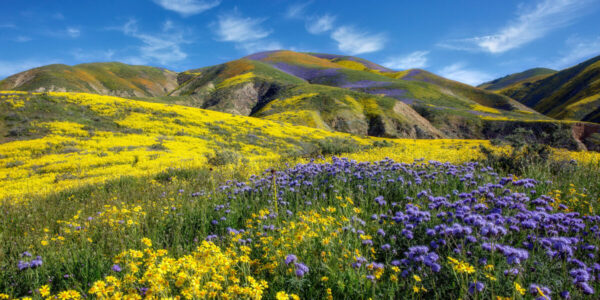
This Landscape Addition Is the Best Answer to a Smarter, Low-Water Garden
It checks all the boxes.
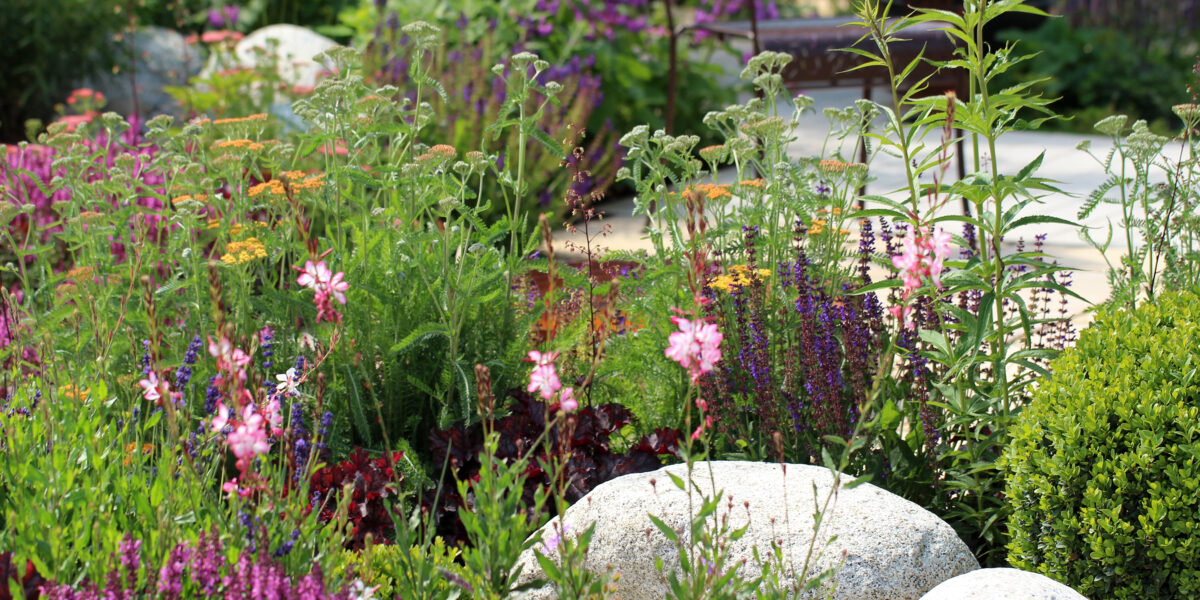
This article is part of our 8-week, limited edition newsletter series, The Low-Water Gardening Guide, where we’ll walk you through what it takes to create a sustainable garden, from swapping in the appropriate plants to new irrigation methods to the tools you’ll need and more. Sign up here to get each installment straight to your inbox.
Regardless of water tables reaching impressively full levels this past winter, gardening with a resource-conscious point of view is still as important as ever. As we continue to implement new routines for healthier ecosystems—lawn removal, swapping out thirsty plants, and updating our irrigation practices—we’re also hoping to inspire how you rethink the design of your landscapes. While adding native plants to lessen water use and increase beneficial wildlife is the first step towards a more sustainable sanctuary, there are other low-water solutions that aid in flood prevention, filter out runoff pollutants, and excel at groundwater recharge. Welcome to the beautifully beneficial world of rain gardens—a lovely landscape addition where 30% more rainwater can soak into the ground compared to conventional lawns, not to mention it provides food and shelter for butterflies, songbirds, and other wildlife. And yes, it can be beautiful too.
What Is a Rain Garden?
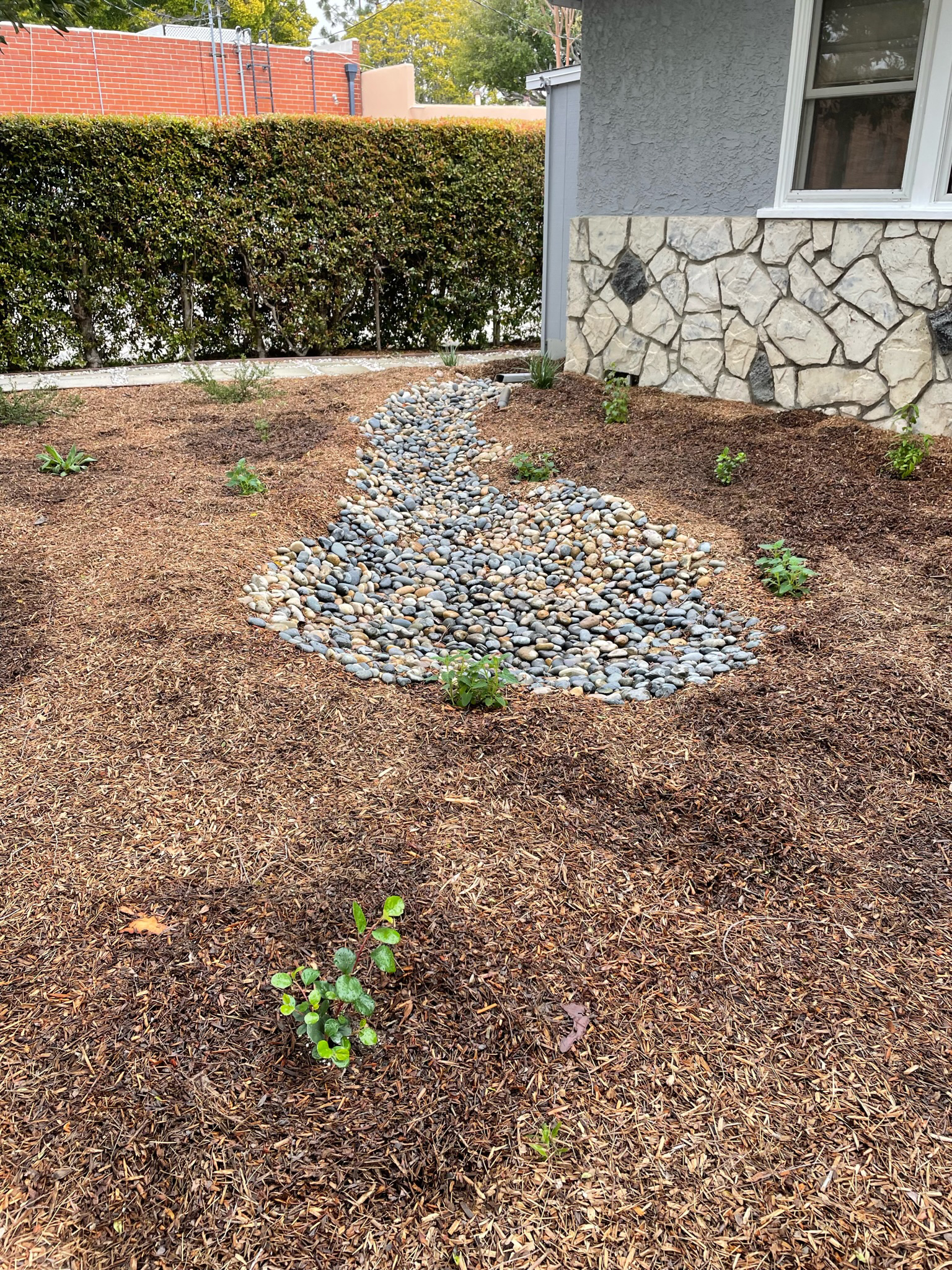
Sophie Pennes
If you want to optimize your low-water footprint while infusing a little bit of sustainable style, the rain garden is the total package. Contrary to what its name suggests, the rain garden is not solely intended for areas inundated with wetness, it’s also imperative for dry areas in need of deep infrequent water recharges and arid locations subject to seasonal flooding or excessive runoff. By creating a depressed area in the landscape, one can effectively collect rain water not only from the sky, but from a connected roof or driveway—and look good while doing it.
We tapped native and edible garden designer Sophie Pennes of Urban Farms LA, who has been implementing rain capture designs into her work more than ever across Los Angeles. “They look gorgeous and create unique seasonal ecosystems in your landscape. Instead of letting precious rainwater wash into our streets and gutters, we can allow it to slowly percolate into our soil, feed our plants, and recharge underground aquifers. It’s a win-win situation!” she says.
We couldn’t agree more, and no matter what size area you’re working with, we’ve got all the tips to kickstart your own water-collecting oasis. Here’s to infusing a little visual interest and more water into your next landscaping project!
How to Build a Rain Garden
1. Know Your Flow
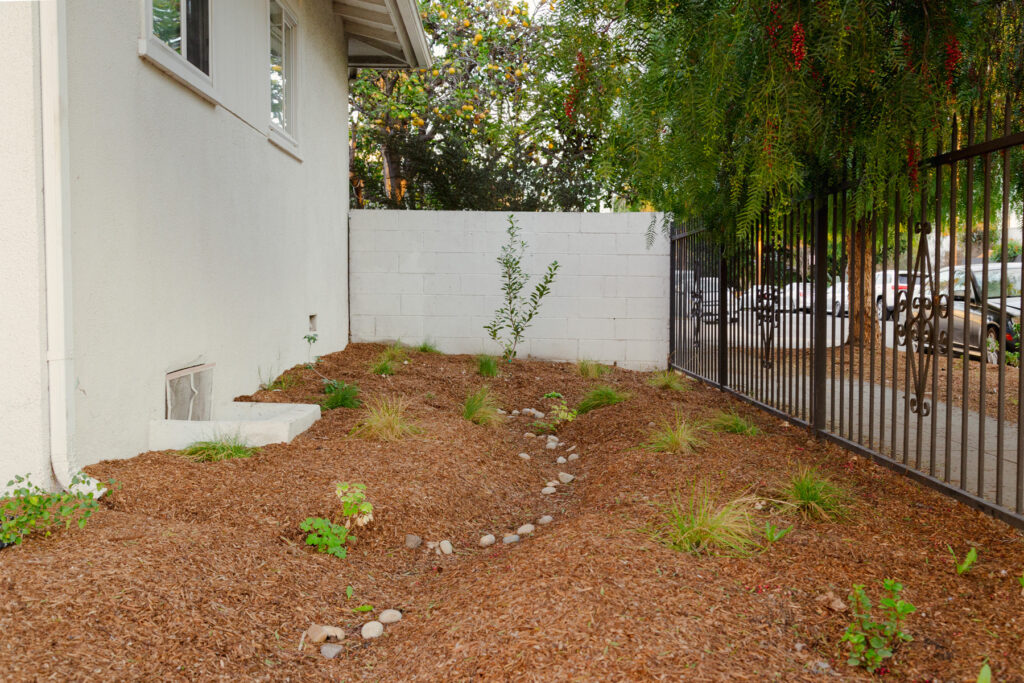
Lexi Wimberly
When it comes to starting any new garden project, prep and planning is the most important step. Sophie suggests observing where and how water naturally flows on your property, and considering if that location might be an optimal location for your garden, or if water will need to be redirected to avoid long term damage near structures—or if you need to supplement specific plantings like trees.
Looking at the bigger picture before breaking ground is key. Sophie recommends that if you’re located on a steep slope, “You may want your rain garden towards the top allowing water to slowly flow down the hill,” which can supply moisture to other plantings similar to a bioswale. “If you’re on a gentle slope, think about creating several rain garden areas that flow into each other with boulders or mounds to slow water down while mimicking a stream or creek,” she adds. When taking the full scope of the property into consideration, there are many design options and water solutions that can be implemented—Sophie says, “Excess water is only a problem if we don’t use it wisely!”
2. Consider Sustainable Styles
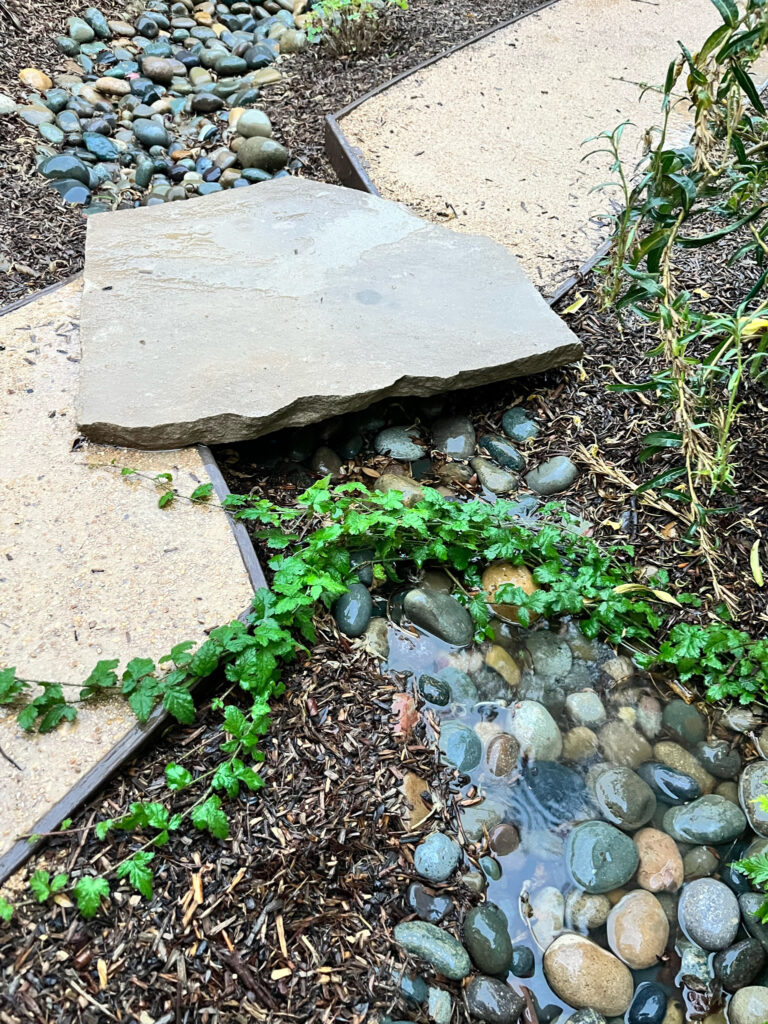
Sophie Pennes
Once you’ve decided on location, there are a few designs to consider depending on your rain garden style and the amount of water you plan on harvesting during the wet seasons. When choosing your swale style, Sophie reminds us that rain gardens will benefit your landscape all year, but it will only hold water in the rainy season, so create your foundation accordingly.
Dry Swale
Best for locations where water naturally pools, the main materials used to create these dry creek beds are rocks, gravel, and boulders. The use of different-sized rock materials is key to slowing down and filtrating water for maximum soil hydration. Creek beds are effective as stand-alone water harvesting features, or used in tandem with a rain garden. They alleviate drainage problems and help prevent erosion while adding unique visual interest to your garden.
Vegetated Swale
A shallow ditch with gently sloping sides that utilizes grass or plant coverings on the side slopes and bottom surfaces to provide filtration and aid in slowing down the flow rate, mimicking the natural abilities of a forest, meadow, or prairie while creating a wildlife habitat. These perform best when filled with plants that can withstand brief periods of water flooding the area followed by dry spells.
Combination
Suitable for larger areas, this option takes the best of dry creek beds paired with vegetation to solve drainage issues while redirecting water towards surrounding soil and plantings. Creek beds should be placed in areas where there is ample water collection, such as designated downspouts, allowing water to collect and slowly move along a stream-like channel towards neighboring vegetation.
Pro Tip: If attaching to a downspout, Sophie suggests using an online calculator to estimate how many gallons of sky water to prepare for based on the square footage of the roof. This will help estimate the type of downspout connection and swale size needed for optimum water harvesting without any unnecessary runoff.
3. Create Waterways
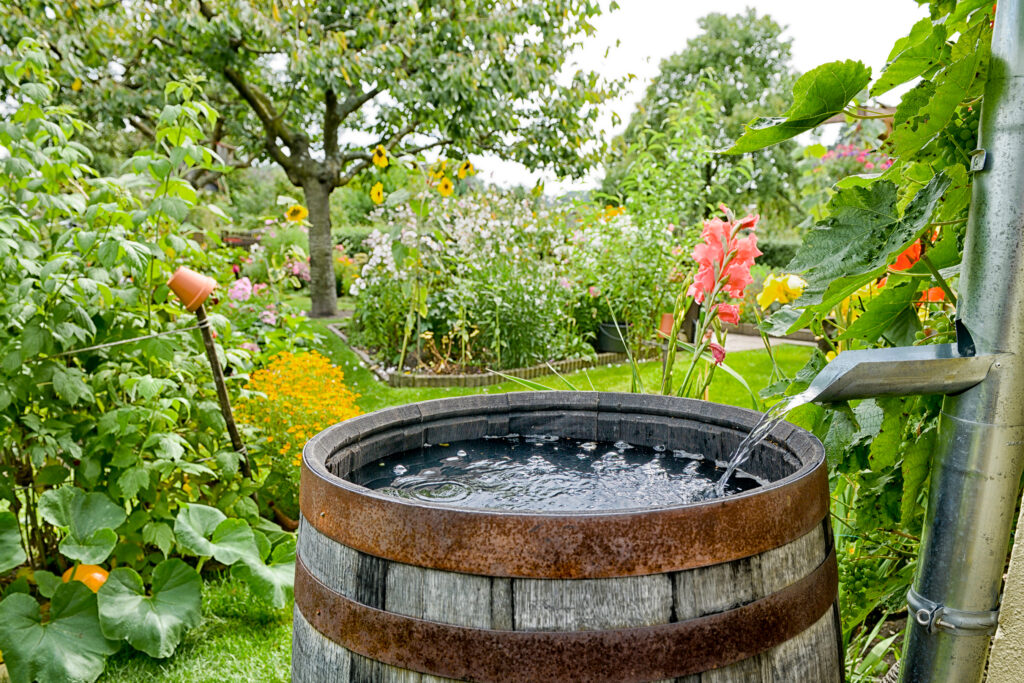
Schulzie/Getty Images
Next it is time to direct precious rainwater for collection. Sophie suggests directing downspouts from your gutters directly into your rain garden, best in locations where there are no foundational issues. If you would prefer to collect water further away from your house, underground pipes can be connected from downspouts to transport water underground towards the swale. Rain barrels can also be directed towards swales as a means of overflow capture, proving that many water harvesting systems can work together seamlessly to take advantage of as many resources as possible. When directing water, gravity is in your favor, so keep in mind that if the area does not naturally slope towards your collection swale, you may need to create a slight grade for flow assistance.
4. Choose the Best Plants for a Rain Garden
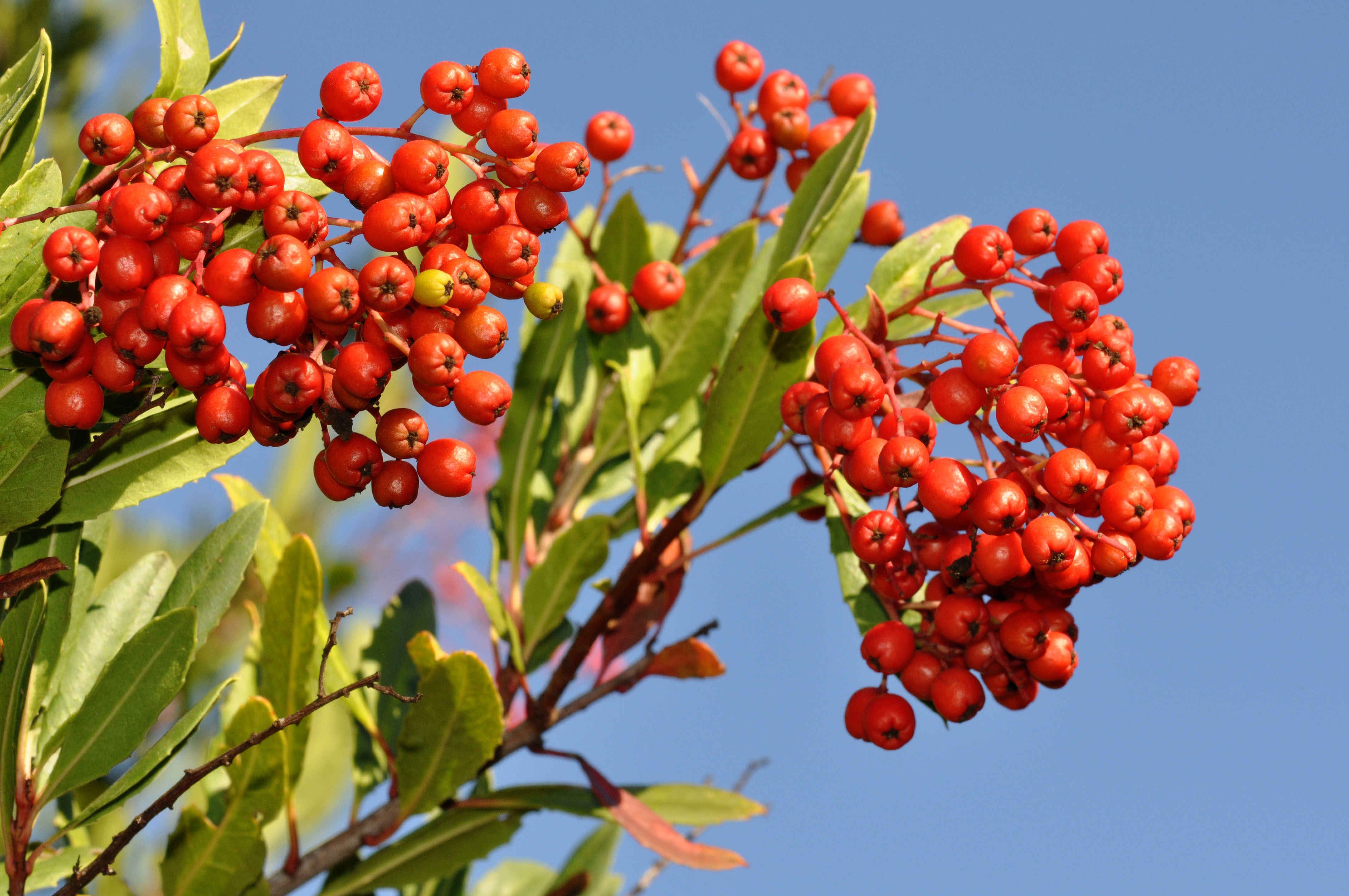
rmh31284 / Getty Images
When choosing plants for your vegetated swale, there are three zones to consider before finalizing placement due to differing irrigation and sunlight requirements. The lowest area, also known as the swale basin, is the most inundated area, requiring plants that will provide the most filtration and drainage speed control. The side slopes perform best when planted with spreading cultivars with strong root systems, as they aid in soil binding and erosion control. Finally the surrounding areas known as the edge should be planted with shrubs and trees that aid in erosion control and benefit from groundwater. Here we offer a few native go-tos to inspire your own plant layering.
Best Plants for Outside Planting
Ceanothus, Toyon (Heteromeles arbutifolia), California Wild Rose (Rosa californica), Native Buckwheats (Eriogonum), Native Sages (Salvias), Western Columbine (Aquilegia californica)
Best Plants for Slopes
Hummingbird Sage (Salvia spathacea), California Hedgenettle (Stachys bullata), Hooker’s Evening Primrose (Oenothera elata), Yarrow (Achillea millefolium), Alpine Strawberry (Fragaria vesca)
Best Plants for Basins
Elderberry (Sambucus species), Canyon Prince Wild Rye (Leymus condensatus), Sedges (Carex), Rush Species (Juncus)
5. Install and Maintain
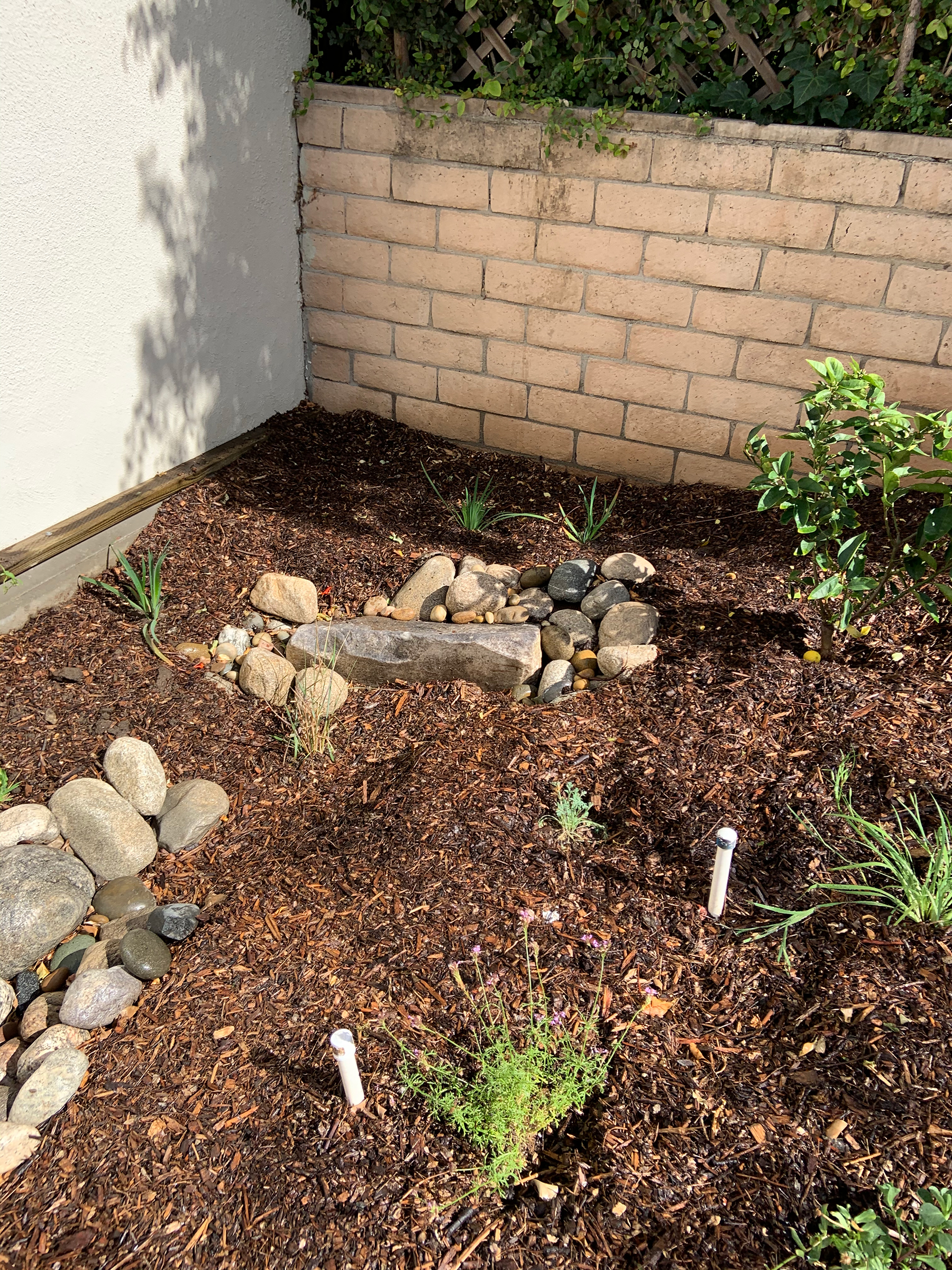
Sophie Pennes
With any new system, trials and reassessments may be in order. No two storms are the same, so it’s important to review how water is flowing and plants have responded throughout each wet season. That being said, if there are periods of heavy rain, make sure that there is no flooding outside of designated swales and redirect as needed. Plant health and establishment over the first year is incredibly important—if there are periods without rain, water your plants to ensure root systems grow strong to support the swale structure. Remove any weeds that might compete for soil nutrients and mulch the area to further slow down runoff and retain moisture.
Now stand back and marvel at how you’ve harnessed the full potential of rainwater collection to create a beautiful and bio-diverse landscape!
Read the Current Issue Here!
Get one year of Sunset—and all kinds of bonuses—for just $29.95. Subscribe now!
